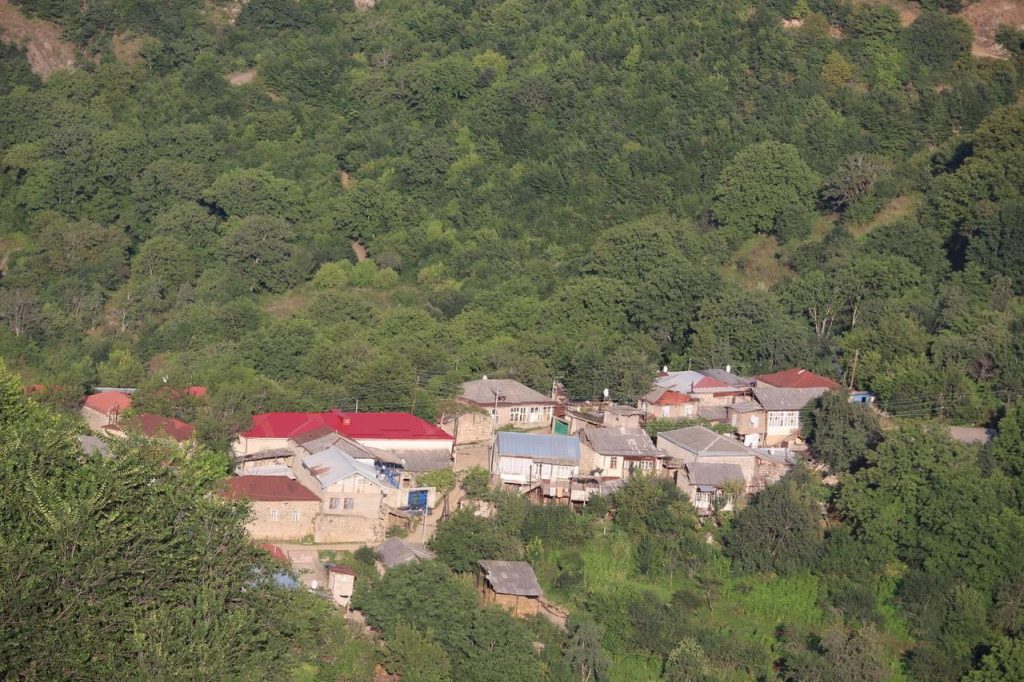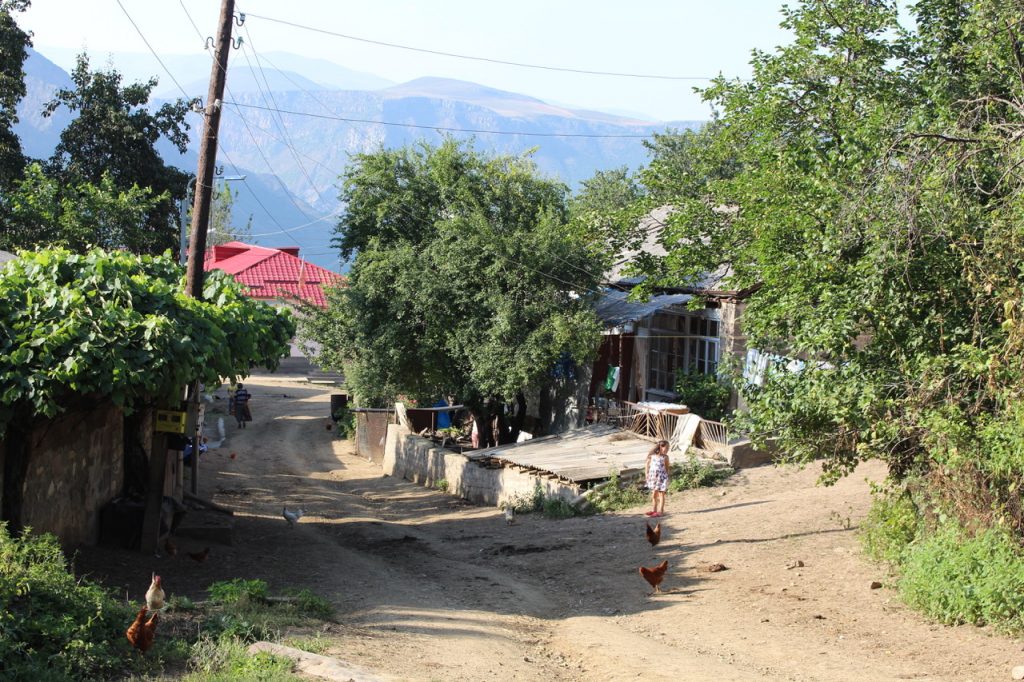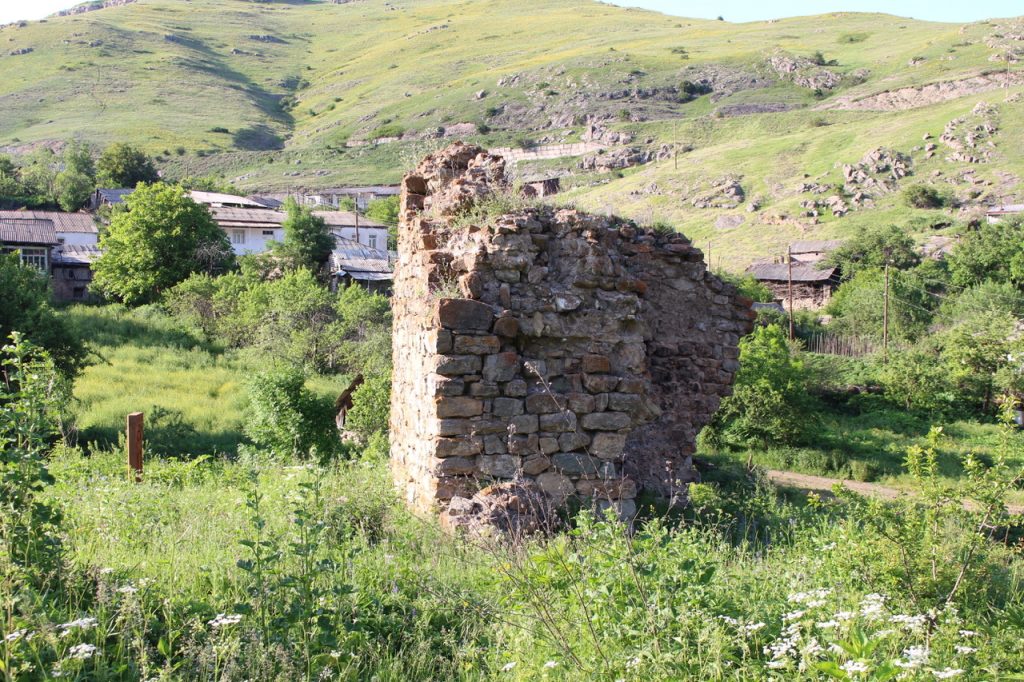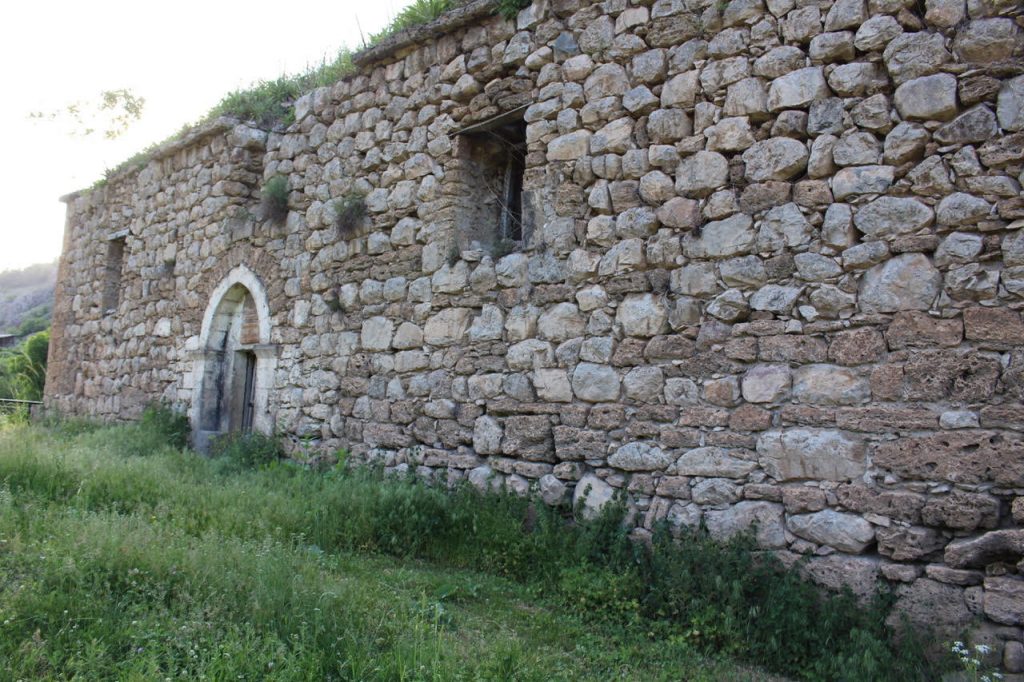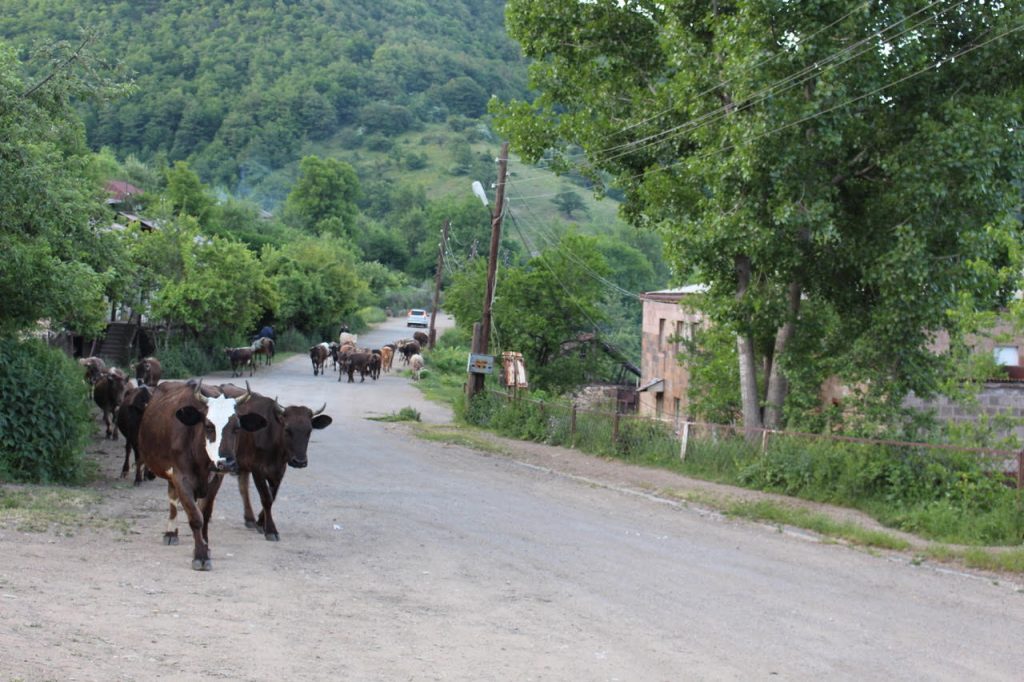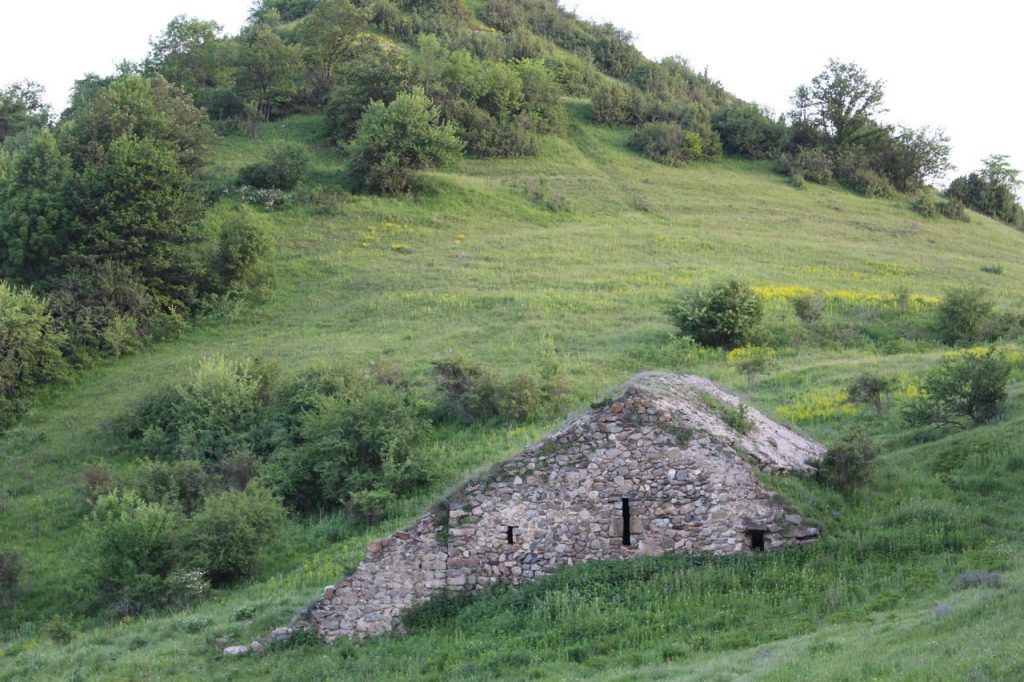A friend and I returned to Yerevan after three days of exploring selected sites around Sisian in the Syunik province. We stayed at the Basen hotel where Hasmik, the manager, was extremely helpful. One of our objectives was to visit some of the villages in the vicinity of the Tatev Monastery.
Stepanos Orbelian, in his 13th century History of the Provence of Syunik, cited these villages as dens of thieves. On occasion, Tatev, with Prince Smpad, was in a state of war against these villages. In the 10th century, shortly after Tatev’s construction, the Tondrakian heretical sect had established itself here. Besides being a religious movement, the Tondrakians opposed feudal domination of their villages by the church and local princes. This was a social and political movement as well as a religious one.
This all was nearly a millennium ago, but even to this day, people in these villages have a less than positive attitude towards Tatev. I do not know if this is historical memory or something else.
Tanzatap, a scenic village in the valley below which is visible from the road rising to the left above Tatev, is a lush village with friendly people. It is perhaps a 20-minute drive over a passable dirt road. Its church was established by a priest who moved to the area from Van in the 1800s. As we entered the village an elderly woman, in her eighties, recognized my friend Vova. He had been in that village 30-35 years ago working on the preservation of Armenia’s historical and cultural monuments. She recalled that he and his group came to Tanzatap to buy bread and food. “We always welcomed you, we were glad to see you”, she said, implying that such was not the case in Tatev. Tanzatap was one of the “dens of thieves” cited in Orbelian’s history. The village has remaining examples of civil architecture from 100-200 years ago.
Later we entered Aghvani village. The beauty of the village is spectacular. As we searched the village for a holy site, which Vova vaguely recalled from a decades-ago visit, we encountered an elderly gentleman sitting on a rock. He directed us towards the holy site, consisting of two walls of a ruined church. He indicated that the population of the village is three…yes, three! He lives there with his son; but only during the summer. In the fall, they move to Kapan. The village mayor does not even live here in the village; he too lives in Kapan! The elderly gentleman had nothing kind to say about the government. No one did. People felt a complete sense of abandonment. The man and his son were overjoyed to see someone actually visit their village.
As we descended into the valley, in the distance we viewed fields covered with a white substance. We discovered the “substance” was white and yellow flowers, daisies, completely covering fields and often the side of the road.
We arrived at Tanzaver. The village has a functioning church, Surb Hripsime, dated to 1705 by an inscription on its wall. A woman came by to open the church door for us. Nearby, adjacent to a home in the village, are the remnants of another church whose date and name are unknown. We were invited for coffee. Before we were able to respond to the invitation the table was set, and it was much more than coffee! A man, Stepan, joined us and asked if we would like to see the third church of the village. Of course, we said we would.
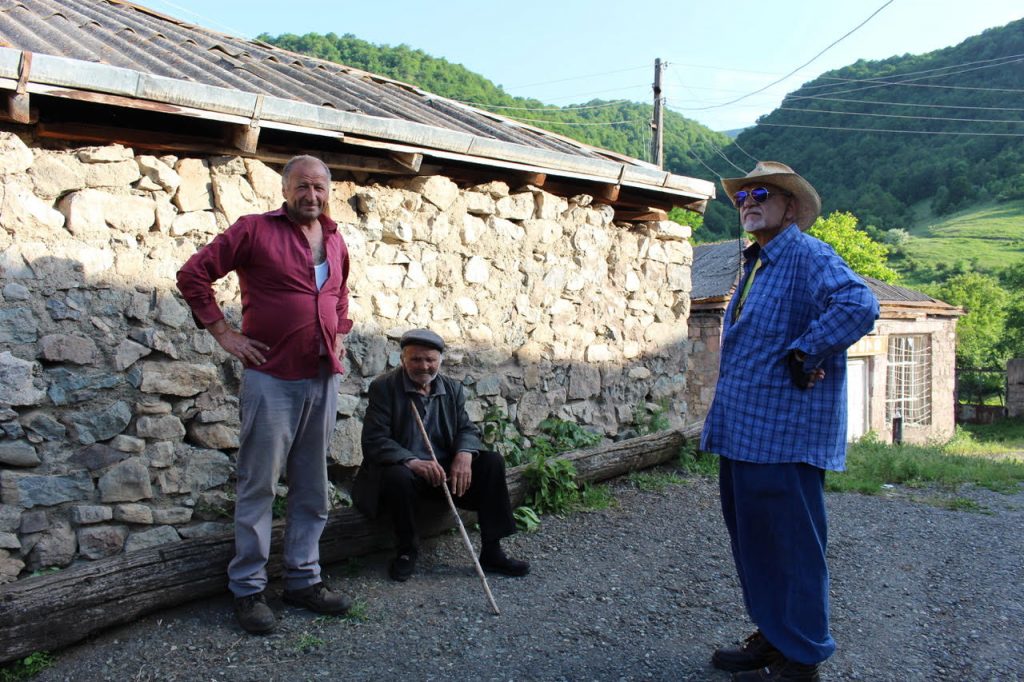
Two thirds of Aghvani village (population of three), with Vova standing to right (Photo: Joseph Dagdigian)
After thanking the woman and her sons who provided us with so much hospitality, Stepan joined us in our rented Niva. After a 30 minute drive over hills, through woods and mud, we arrived at a large, green, gently sloping field with a pen of sheep. Nearby was a fairly large church, again whose name and date are unknown. My friend Vova believes the church could be from 7-10th centunies, but we will not know until the site is studied by archaeologists. The church or site is called “Mach” by locals, but no one seems to know the origin or meaning of that name. Nearby is a grave site which to me resembles the circular bronze age necropolises I have seen, but I am not an expert. Some of the stones had crude crosses scratched on them.
Back in Sisian, next to the Surb Hovhannes 6th century church, is the gravesite of approximately 55[1], mostly young soldiers who fought in Artsakh. This is an enormous loss for a town of this size. It was Sunday, a badarak was in progress. Inside the church and out were soldiers with pensive, thoughtful expressions. An older man was taking care of the nicely kept gravesites. His son sculptured one of the memorials there, and then became one of the casualties in Artsakh. The caretaker said he does not receive much from the government, but even if he received nothing, he would care for this site. “These soldiers deserve to be honored”, he said.
On our last day in the region we stayed at the Holiday Resort, not a very fancy place, but the owner Mher and his wife were fantastic. In a field about a half mile away Mher discovered the remains of a church whose name and date are unknown.
On the way back to Yerevan, near the town of Malishka, is the ancient settlement of Moz or Mozan, which I hoped to photograph. It was on the Silk Road but according to historical records, it was destroyed by a volcanic eruption and earthquake. There is certainly a lot of ejecta from a volcano nearby but I am not clear if the eruption occurred during the habitation of Moz or before. We drove down a rocky path, and found a farmhouse with a man and his adult son, plus 4-5 medium sized very well behaved dogs. We discussed Moz over a cup of coffee. The father was amazed that we were actually interested in this site.
Suddenly the dogs went wild, sensing danger and barking at a nearby spot in the bushes towards the small river. Immediately the son picked up a pitchfork and heavy stick and ran towards the area that was threatening his dogs. He stabbed a very large “Gyurza” snake and beat it to death with the stick before it could strike. This snake is world class poisonous. A few days earlier one of his dogs died from a snakebite from such a snake. He told me that he could take me to Moz but that we would have to be careful. Actually, I was game to go, but by now it was getting late. I had previously been to Moz and taken film photos, but wanted to get some digital shots. So we let that go for now— maybe early fall when the weather cools and the snakes are less active we will rethink.
Once the snake was dead, one of the dogs decided to marshal its courage and attacked the snake, biting it and throwing it towards the river, repeating this action a number of times. Later at a store in nearby Vayk, the storeowner indicated a young boy was bitten by a Gyurza. After 2-3 days of treatment locally, he needed to be transferred to Yerevan for additional treatment. I hope the boy is well by now.
I came back to Yerevan very much humbled by the hospitality of those we encountered, some of whom have very little. Years ago, Armenia was an abstraction; land, history. Now it’s much more; it is people we’ve met.
I’ll likely forget many of their names but I’ll not forget them. I’ll wake up in the night, or divert my attention from the task at hand, and wonder if they are well, if they were able to stay in Armenia and support their families here. As a dear friend told me, “The land does not belong to us… We belong to the land.”
Note
[1] I, the author of this article, apologize for my use of the word “approximately” because really, there is no “approximate”. Each of our soldiers is real, an actual family member, a real Armenian, an actual hero. There is nothing “approximate” about this.
Source: Armenian Weekly
Link: Unseen Armenia: Explorations Around Sisian

